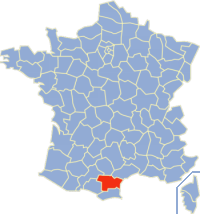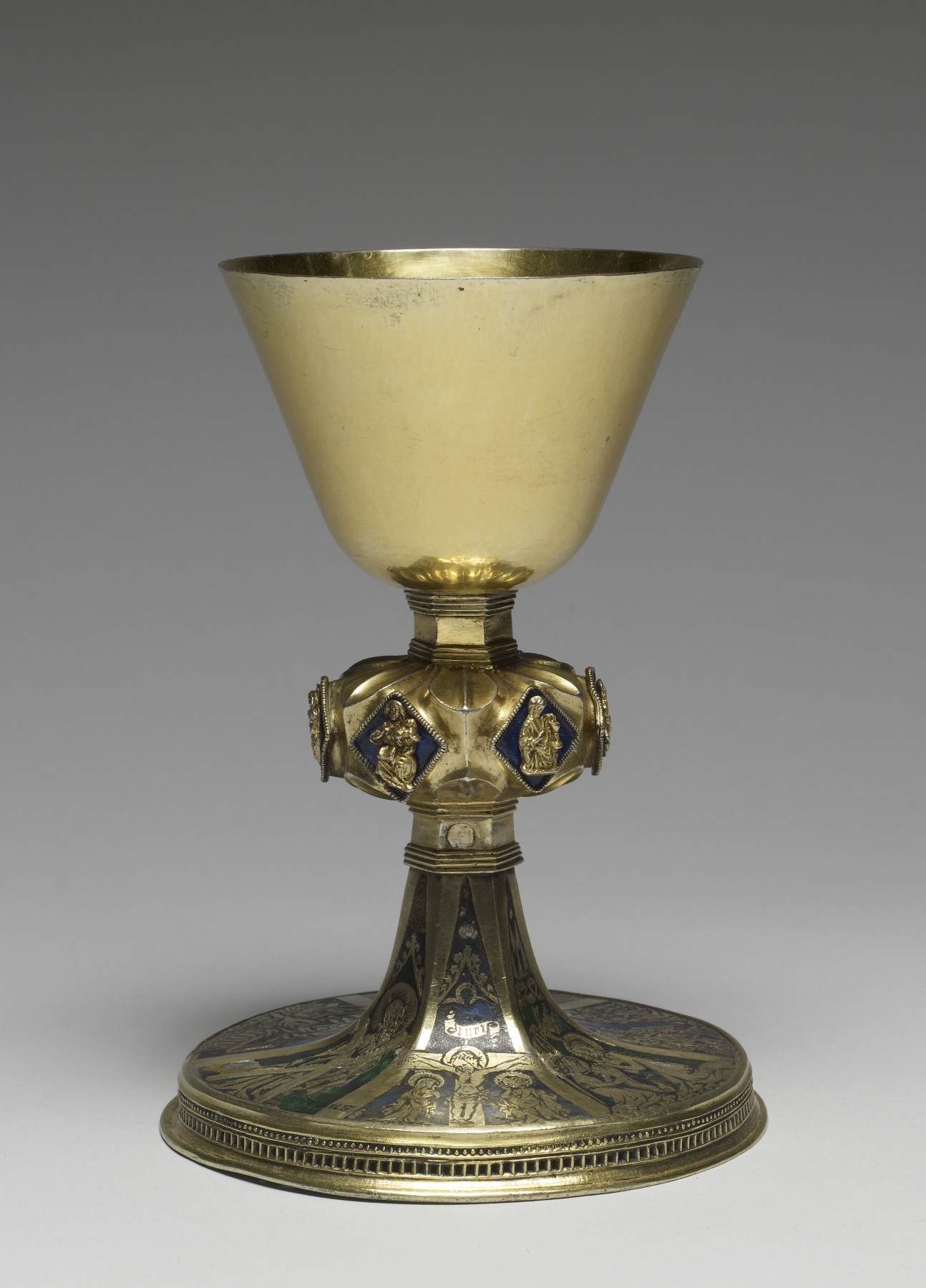|
Alaigne
Alaigne (; ) is a Communes of France, commune in the Aude Departments of France, department in the Occitania (administrative region), Occitanie region of southern France. Geography The commune is located some 10 km north-west of Limoux and 20 km east of Mirepoix, Ariège, Mirepoix. A number of district roads all converge on the village of Alaigne: the D102 south from Belvèze-du-Razès, the D702 west from Routier, Aude, Routier, the D102 north-west from Limoux, and the D52 which comes east from Bellegarde-du-Razès then continues south to Villelongue-d'Aude. The village itself is a traditional Circulade located in the historical region of Razès. Located in the AOP Malepere wine growing area, the commune is mostly vineyards and farmland for wheat, rape and sunflowers with a few scattered forests. There are no villages or hamlets other than Alaigne. Neighbouring communes and towns Heraldry History Before the Revolution, Alaigne was a part of Pieusse and Routier ... [...More Info...] [...Related Items...] OR: [Wikipedia] [Google] [Baidu] |
Communes Of The Aude Department
The following is a list of the 433 Communes of France, communes of the Aude Departments of France, department of France. The communes cooperate in the following Communes of France#Intercommunality, intercommunalities (as of 2025):Périmètre des groupements en 2025 BANATIC. Accessed 28 May 2025. *Communauté d'agglomération Carcassonne Agglo *Communauté d'agglomération Le Grand Narbonne *Communauté de communes Castelnaudary Lauragais Audois *Communauté de communes Corbières Salanque Méditerranée (partly) *Communauté de communes du Limouxin *Communauté de communes de la Montagne Noire *Communauté de communes Piège-Lauragais-Malepère *Communauté de communes des Pyrénées Audoises *Communauté de communes Région Lézignanaise, Corbières et Minervois *Communauté de communes aux sources du Canal du ... [...More Info...] [...Related Items...] OR: [Wikipedia] [Google] [Baidu] |
Routier, Aude
Routier (; ) is a commune in the Aude department in southern France. Population Notable people * Lazare Escarguel (1816-1893), politician and newspaper editor born and died in Routier. See also *Communes of the Aude department The following is a list of the 433 Communes of France, communes of the Aude Departments of France, department of France. The communes cooperate in the following Communes of France#Intercommunality, intercommunalities (as of 2025): References Communes of Aude Aude communes articles needing translation from French Wikipedia {{Aude-geo-stub ...[...More Info...] [...Related Items...] OR: [Wikipedia] [Google] [Baidu] |
Pieusse
Pieusse (; Languedocien: ''Piussa'') is a commune in the Aude department in southern France. Population Transportation The closest airport to Pieusse is Carcassonne Airport (15 km). See also *Communes of the Aude department The following is a list of the 433 Communes of France, communes of the Aude Departments of France, department of France. The communes cooperate in the following Communes of France#Intercommunality, intercommunalities (as of 2025): References Communes of Aude Aude communes articles needing translation from French Wikipedia {{Aude-geo-stub ...[...More Info...] [...Related Items...] OR: [Wikipedia] [Google] [Baidu] |
Communes Of France
A () is a level of administrative divisions of France, administrative division in the France, French Republic. French are analogous to civil townships and incorporated municipality, municipalities in Canada and the United States; ' in Germany; ' in Italy; ' in Spain; or civil parishes in the United Kingdom. are based on historical geographic communities or villages and are vested with significant powers to manage the populations and land of the geographic area covered. The are the fourth-level administrative divisions of France. vary widely in size and area, from large sprawling cities with millions of inhabitants like Paris, to small hamlet (place), hamlets with only a handful of inhabitants. typically are based on pre-existing villages and facilitate local governance. All have names, but not all named geographic areas or groups of people residing together are ( or ), the difference residing in the lack of administrative powers. Except for the Municipal arrondissem ... [...More Info...] [...Related Items...] OR: [Wikipedia] [Google] [Baidu] |
Escueillens-et-Saint-Just-de-Bélengard
Escueillens-et-Saint-Just-de-Bélengard (; ) is a commune in the Aude department in southern France. Population See also *Communes of the Aude department The following is a list of the 433 Communes of France, communes of the Aude Departments of France, department of France. The communes cooperate in the following Communes of France#Intercommunality, intercommunalities (as of 2025): References Communes of Aude Aude communes articles needing translation from French Wikipedia {{Aude-geo-stub ...[...More Info...] [...Related Items...] OR: [Wikipedia] [Google] [Baidu] |
Altar
An altar is a table or platform for the presentation of religion, religious offerings, for sacrifices, or for other ritualistic purposes. Altars are found at shrines, temples, Church (building), churches, and other places of worship. They are used particularly in Christianity, Buddhism, Hinduism, and modern paganism. Many historical-medieval faiths also made use of them, including the Religion in ancient Rome, Roman, Religion in ancient Greece, Greek, and Norse paganism, Norse religions. Etymology The modern English language, English word ''wikt:altar#English, altar'' was derived from Middle English ''wikt:alter#Latin, altar'', from Old English ''wikt:alter, alter'', taken from Latin ''wikt:altare#Latin, altare'' ("altar"), probably related to ''wikt:adolere#Etymology 2, adolere'' ("burn"); thus "burning place", influenced by ''wikt:altus#Latin, altus'' ("high"). It displaced the native Old English word ''wikt:weofod#Old English, wēofod''. Altars in antiquity In antiquity, alta ... [...More Info...] [...Related Items...] OR: [Wikipedia] [Google] [Baidu] |
Stoup
A holy water font or stoup is a vessel containing holy water which is generally placed near the entrance of a church. It is often placed at the base of a crucifix or other Christian art. It is used in Catholic, as well as many Lutheran and Anglican churches, to make the sign of the cross using the holy water upon entrance of the church. Holy water is blessed by a priest or a deacon, and its usage by Christians serves as a reminder of their baptismal vows. The holy water font is a derivative of the cantharus, which has been used by Christians since the time of the early Church to perform ablutions before entering the church (while these are no longer normative in Western Christianity, canthari are found at the entrance of certain Oriental Orthodox and Eastern Orthodox churches). Gallery File:Colonna - la Maddalena acquasantiera 1050336.JPG, Holy water font in Santa Maria Maddalena, Rome, Italy File:Stoups pondy cathedral.jpg, A carved stoup at the Immaculate Conception Cathedra ... [...More Info...] [...Related Items...] OR: [Wikipedia] [Google] [Baidu] |
Paten
A paten or diskos is a small plate used for the celebration of the Eucharist (as in a mass). It is generally used during the liturgy itself, while the reserved sacrament are stored in the tabernacle in a ciborium. Western usage In many Western liturgical denominations, the paten is typically either a simple saucer-like plate or a low bowl. A smaller style paten will often have a depression that allows it to securely sit on top of the chalice, as shown in the illustration on the left here. Roman rite The General Instruction of the Roman Missal lays down rules for patens: Sacred vessels should be made from precious metal. If they are made from metal that rusts or from a metal less precious than gold, they should generally be gilded on the inside. However, provisions for vessels made from non-precious metals are made as well, provided they are "made from other solid materials which in the common estimation in each region are considered precious or noble." Some call the comm ... [...More Info...] [...Related Items...] OR: [Wikipedia] [Google] [Baidu] |
Chalice
A chalice (from Latin 'cup', taken from the Ancient Greek () 'cup') is a drinking cup raised on a stem with a foot or base. Although it is a technical archaeological term, in modern parlance the word is now used almost exclusively for the cups used in Christian liturgy as part of a service of the Eucharist, such as a Catholic mass. These are normally made of metal, but neither the shape nor the material is a requirement. Most have no handles, and in recent centuries the cup at the top has usually been a simple flared shape. Historically, the same shape was used for elite secular vessels, and many individual examples have served both secular and liturgical uses over their history, for example the Lacock Cup and Royal Gold Cup, both late medieval cups. Cups owned by churches were much more likely to survive, as secular drinkware in precious metal was usually melted down when it fell out of fashion. The same general cup shape is also called a goblet (from Old French , di ... [...More Info...] [...Related Items...] OR: [Wikipedia] [Google] [Baidu] |
Antoine Sabarthès
Canon or abbot Antoine Sabarthès, full name Antoine Auguste Sabarthès, (27 May 1854 – 19 February 1944) was a French ecclesiastic, writer and historian, a specialist of the Aude department. Biography A poorly publicized figure, not much is known about the life of Abbé Sabarthès, who lived until his 90th birthday. Only his works will be taken from him. He entered the seminary in Carcassonne, where he studied and was ordained in 1878. He became a priest of the diocese of Carcassonne. After several assignments in villages, he devoted himself to the study of society, the church and the territories administered by it; He published several works in Latin, Occitan and French. Historian Nowadays, Sabarthès is synonymous with reference for all that concerns the Aude department. He was a member of numerous , an adherent and publicist for many years to the "", the "Comité des travaux historiques et scientifiques", the "Société des Arts et Sciences de Carcassonne" and the "Commi ... [...More Info...] [...Related Items...] OR: [Wikipedia] [Google] [Baidu] |
Feudal Barony
A feudal baron is a vassal holding a heritable fief called a ''barony'', comprising a specific portion of land, granted by an overlord in return for allegiance and service. Following the end of European feudalism, feudal baronies have largely been superseded by baronies held as a rank of nobility, without any attachment to a fief. Feudalism was abolished in England and Ireland during the 17th century and English/Irish feudal titles, such as feudal baronies currently exist as estates in land, but there is no recognition. In contrast, in Scotland, the feudal dignity of baron remained in existence until 2004, until the law change that ended feudalism, with specific provisions in place to legally safeguard the dignity of baronage titles, converting them from feudal titles to personal titles, no longer attached to the land. England Historically, the feudal barons of England were the king's tenants-in-chief, that is to say men who held land by feudal tenure directly from the king ... [...More Info...] [...Related Items...] OR: [Wikipedia] [Google] [Baidu] |
Gruissan
Gruissan (; ) is a commune in the Aude department in southern France. The historian Émile Raunié (1854–1911) was born in Gruissan. Population The town Situated on the Mediterranean coast of Southern France, Gruissan is situated in thParc naturel régional de la Narbonnaise en Méditerranée Traditionally a fishing village, the circular town is built around the former castle; a 10th-century château of which only the Tour Barberousse (Redbeard Tower) remains. See also * Corbières AOC * Communes of the Aude department The following is a list of the 433 Communes of France, communes of the Aude Departments of France, department of France. The communes cooperate in the following Communes of France#Intercommunality, intercommunalities (as of 2025): References Communes of Aude[...More Info...] [...Related Items...] OR: [Wikipedia] [Google] [Baidu] |





